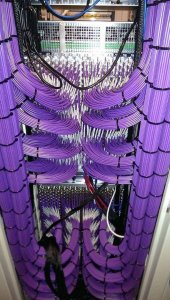Diverse Dilldalltråden 1.5
- Trådstarter Boffen
- Startdato
Diskusjonstråd Se tråd i gallerivisning
-
Den var ganske "spot on"
- Ble medlem
- 19.09.2014
- Innlegg
- 23.111
- Antall liker
- 15.993
Stephen Hawking Angers Trump Supporters with Baffling Array of Long Words - The New Yorker
LONDON (The Borowitz Report)—The theoretical physicist Stephen Hawking angered supporters of Donald J. Trump on Monday by responding to a question about the billionaire with a baffling array of long words.
Speaking to a television interviewer in London, Hawking called Trump “a demagogue who seems to appeal to the lowest common denominator,” a statement that many Trump supporters believed was intentionally designed to confuse them.
Moments after Hawking made the remark, Google reported a sharp increase in searches for the terms “demagogue,” “denominator,” and “Stephen Hawking.”
“For a so-called genius, this was an epic fail,” Trump’s campaign manager, Corey Lewandowski, said. “If Professor Hawking wants to do some damage, maybe he should try talking in English next time.”
Later in the day, Hawking attempted to clarify his remark about the presumptive Republican Presidential nominee, telling a reporter, “Trump bad man. Real bad man.”GGjestemedlem
Gjest
- Ble medlem
- 23.03.2006
- Innlegg
- 21.009
- Antall liker
- 11.731
https://www.nrk.no/norge/ffi_-ingen-biologiske-smittestoffer-i-pulveret-1.12980917
Kom til å tenke på denne:

- Ble medlem
- 12.11.2003
- Innlegg
- 1.612
- Antall liker
- 611

Jammen meg godt han aldri trenger å endre konfigurasjon, nå som har stripsa fast hver kabelbunt.HHardingfele
Gjest
Vits som går på nettet.
I BEGRAVELSE
Jeg: Hva er wifi-passordet her?
Hun: Vis litt respekt da.
Jeg: I ett ord?SSlubbert
Gjest
HHardingfele
Gjest
I serien tåpelige innkjøp. Den britiske marines nye og rådyre destroyere tåler ikke å brukes i varme farvann.
https://www.theguardian.com/uk-news...down-if-sent-to-middle-east-admits-royal-navy
Gen (now Lord) David Richards, the former chief of defence staff,
repeatedly questioned the relevance of expensive kit procured by
successive governments. “We have £1bn destroyers trying to sort out
pirates in a little dhow with RPGs [rocket-propelled grenades] costing
$50, with an outboard motor [costing] $100,” he saidSist redigert av en moderator:HHardingfele
Gjest
Fake, tenker jeg. Hvorfor skulle han ha så mye brennbar væske på seg? De har kombinert to opptak - ett med han som faller og ett der de har antent fuel. Det skjer ingen detonasjon, vi ser ikke antydning til sjokkbølge. Clickbait.^ Det var førsteinntrykket mitt, også. Men jeg er jammen ikke helt sikker. En viss sjokkbølge er synlig i støvet. Det er tilsynelatende ikke en eksplosjon eller detonasjon, men ser mer ut som at det tar fyr i en flyktig væske som ikke er under trykk, som forsåvidt kan være konsistent med en inkompetent terrorist. Han oppgis å tilhøre boko haram. Kamerabevegelsene er dessuten helt i sync med både skateboarderen og flammene, så dersom det dreier seg om to ulike opptak som er kombinert, er det temmelig dyktig klippet sammen. Det som ser mest fake ut, er at kroppen ser nesten ut til å ha forsvunnet når flammehavet avtar.HHardingfele
Gjest
Det med å få opptakene til å matche er ikke noe problem idag, selv med amatørutstyr. Er nok også grunnen til framingen som er valgt. Men jeg kan ikke huske et eneste tilfelle av selvmordsbomber med molotovcocktail på kroppen. Der foretrekkes sprengstoff og splinter - men en slik smell ville ikke sett noe særlig ut på opptaket, og ville også vært forjævlig å se på om den var virkelig. Så de valgte filmeksplosjon av typen hva som skjer med en bil med overdreven effektbruk om den kjører utfor en skråning. Den lille detonasjonseffekten som er der skyldes nok hva de brukte for å få fart i flammene - for meg ser det ut som noe tilsvarende et knallskudd i parafin. Det blir en lystelig og flammende smell.
Framingen er avslørende. Filmet i høyoppløsning med større utsnitt, og så sammenført senere, med utsnittsjustering for å få til match. Nå har vi tom små enheter som kan programmeres til å bevege kamera likt gjennom flere opptak, men det er strengt tatt ikke nødvendig for å få til dette.HHardingfele
Gjest
Astronauten Don Pettit melder litt om hvorfor Science Fiction Space Operaene i film og fjernsyn har noen utfordringer. Han tar for seg "rakettligningen" og hva den betyr for nyttelast. Kapselen med astronauter som returnerer til jorden, og det vil jo gjerne astronautene, utgjør 0,2% av rakettens vekt på oppskytingsrampen.
Fint lesestoff med mange bra ting å ha med seg i hodet neste gang verdensrommet er fylt med romskip i en film:
Another less recognized side effect of the rocket equation is the sensitivity of completing the rocket burn to obtaining your goal. To illustrate this, I will use some numbers from my Shuttle flight, STS 126 in November 2008. Our target velocity at main engine cut off was 7824 m/s (25819 ft/s). If our engines shut down at 7806 m/s (25760 ft/s), only 18 m/s (59 ft/s) shy of the target value, we would make an orbit but not our designated target orbit. We would not be able to rendezvous with space station and would lose our mission objective. Like being two pennies short of a ten dollar purchase, this is only 0.2% less than the price of admission into space. In this case, we do have some options. We could burn our orbital maneuvering propellant and make up this difference. If we were 3% shy of our target, 7596 (25067 ft/s) we would not have sufficient orbital maneuvering propellant and we would not make any orbit. We would be forced into a trans-Atlantic abort, falling back to Earth and landing in Spain. This final 3% of our required velocity comes during the last 8 seconds of our burn. For astronauts and bull riders, 8 seconds is a long time.
If the radius of our planet were larger, there could be a point at which an Earth escaping rocket could not be built. Let us assume that building a rocket at 96% propellant (4% rocket), currently the limit for just the Shuttle External Tank, is the practical limit for launch vehicle engineering. Let us also choose hydrogen-oxygen, the most energetic chemical propellant known and currently capable of use in a human rated rocket engine. By plugging these numbers into the rocket equation, we can transform the calculated escape velocity into its equivalent planetary radius. That radius would be about 9680 kilometers (Earth is 6670 km). If our planet was 50% larger in diameter, we would not be able to venture into space, at least using rockets for transport.
NASA - The Tyranny of the Rocket EquationJeg har alltid trodd jeg var hetero, men så dukker Ketil Solvik-Olsen opp med sin uimotståelige sjarm og vinnende vesen.ZZomby_Woof
Gjest
Ouch! til den siste der... -
Laster inn…
Diskusjonstråd Se tråd i gallerivisning
-
-
Laster inn…

























